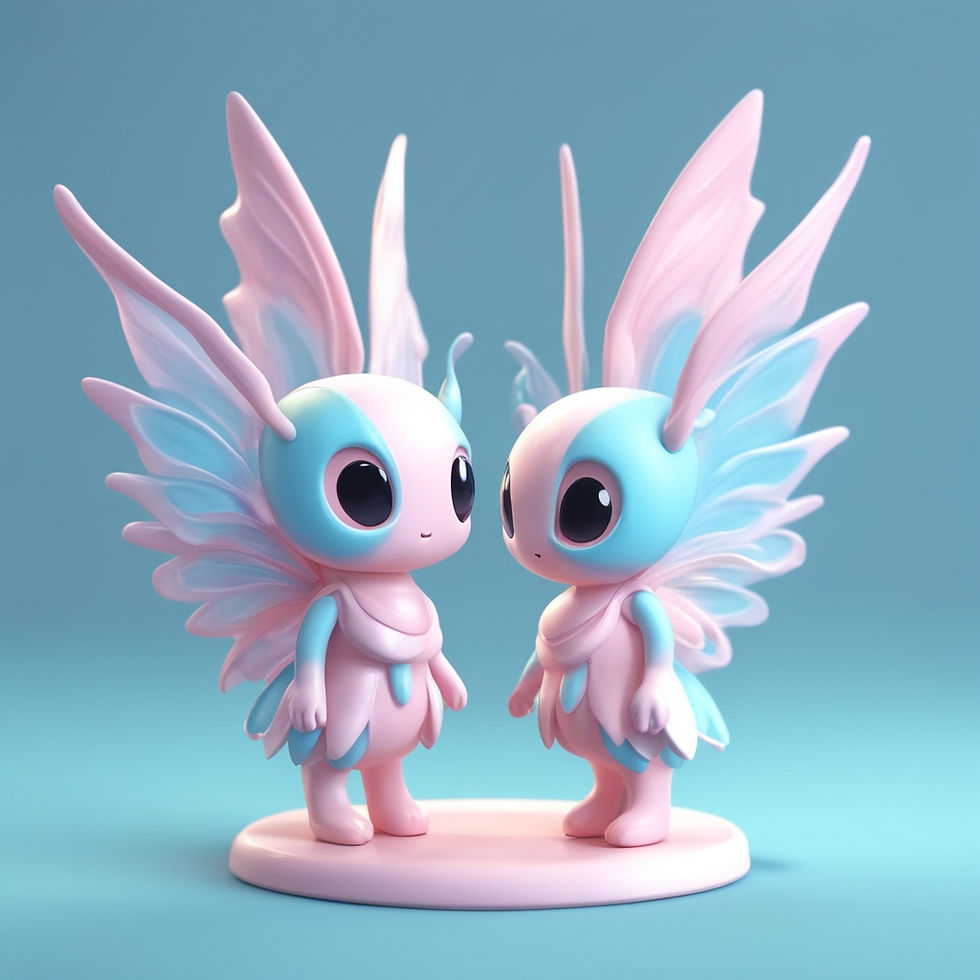Aliens and Folklore
- ppppinkstudio
- May 23, 2024
- 3 min read
Updated: May 25, 2024

For centuries, humanity has been fascinated by the stars, weaving stories that bridge the gap between our earthly existence and the vast cosmos above. Among these tales, the concept of extraterrestrial beings—aliens—has found a unique place, intertwining with folklore across cultures and epochs. This article explores how the legends of old and modern-day UFO sightings create a tapestry of mystery, wonder, and the quest for understanding our place in the universe.
The idea that extraterrestrial beings have visited Earth is far from a modern phenomenon. Ancient civilizations around the globe have rich mythologies that hint at otherworldly encounters, suggesting that our fascination with the stars is as old as civilization itself. In the cradle of civilization, the Sumerians told tales of the Anunnaki, deities who descended from the heavens. These stories have led some to speculate about ancient astronauts visiting Earth, bringing knowledge and civilization. Similarly, the ancient Egyptians worshipped gods like Thoth, who was believed to have come from the stars, imparting wisdom and writing to humanity. Could these depictions be echoes of ancient extraterrestrial encounters? Meanwhile, the Aztecs and Mayans revered Quetzalcoatl, the feathered serpent god, who descended from the sky. These legends have sparked theories about advanced beings from other worlds influencing early American cultures.
As the Middle Ages gave way to the Renaissance, humanity’s view of the cosmos began to shift, blending religious beliefs with early scientific inquiry. This period saw the continued fascination with beings from the heavens, now framed within a changing worldview. Illustrations in medieval manuscripts often depicted strange celestial beings and unexplained phenomena. These images might be early artistic attempts to capture sightings of mysterious entities or divine messengers from the stars. The Renaissance sparked a renewed interest in the cosmos. Works like Dante’s "Divine Comedy" and Galileo’s star charts reflected a blending of scientific curiosity and imaginative speculation about the universe and its inhabitants.
The 20th century brought an explosion of interest in extraterrestrial life, fueled by technological advancements and a cultural shift towards science fiction. UFO sightings and alien encounters became part of the collective consciousness, blurring the lines between folklore and reality. In 1947, the alleged crash of an alien spacecraft in Roswell, New Mexico, and subsequent government secrecy ignited widespread public fascination and paranoia about extraterrestrial visitors. Authors like H.G. Wells and filmmakers like Steven Spielberg popularised the idea of aliens, embedding them deeply in modern culture. These stories explored themes of invasion, coexistence, and the ethical dilemmas of encountering otherworldly beings. The late 20th century saw a surge in reported alien abductions, with detailed accounts of encounters with grey aliens and hybrid beings. These modern tales often echo older folklore, such as fairy abductions and changeling myths, suggesting a deep psychological continuity.
The persistent presence of alien-like beings in folklore points to universal aspects of the human psyche. Psychologists and anthropologists offer several theories to explain this enduring fascination. Carl Jung proposed that UFO sightings and alien encounters might be modern manifestations of archetypal images from the collective unconscious, representing deeper fears and aspirations, especially during times of upheaval. The blending of alien myths with traditional folklore can be seen as cultural syncretism, where new ideas are woven into existing belief systems, addressing contemporary issues while retaining familiar narrative forms. The rise of modern alien folklore coincides with rapid technological advancements and space exploration, suggesting that aliens serve as metaphors for humanity’s hopes and fears about these changes.
The connection between aliens and folklore reveals our timeless quest to understand the unknown. Whether through ancient legends of sky gods or modern UFO sightings, these stories reflect humanity’s enduring curiosity and the desire to explore our place in the cosmos. As we continue to advance technologically and venture further into space, the blending of aliens with folklore will evolve, inspiring wonder and speculation for generations to come.


Comments